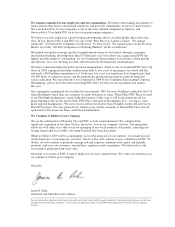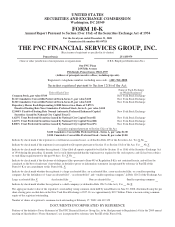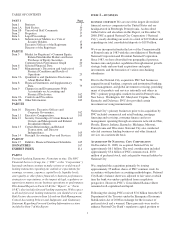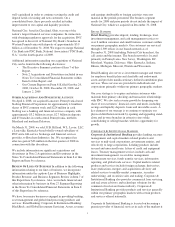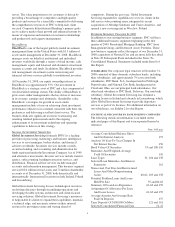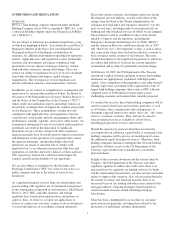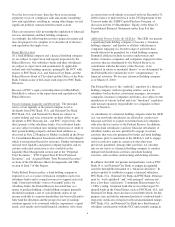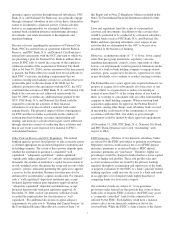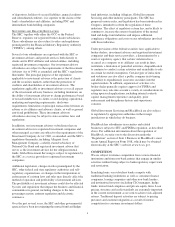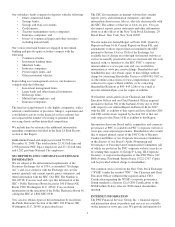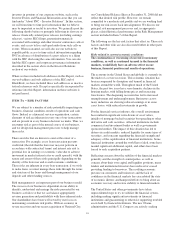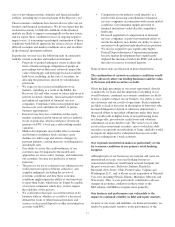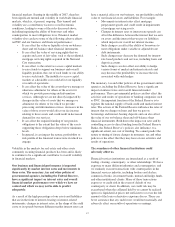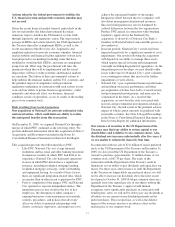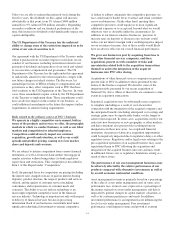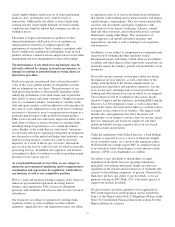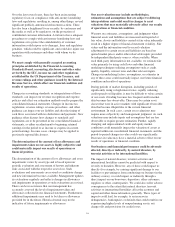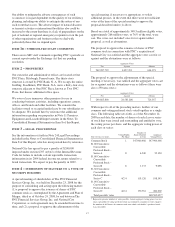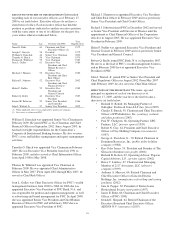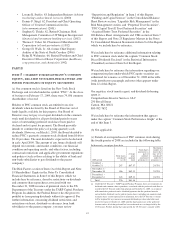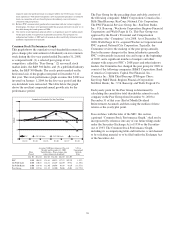PNC Bank 2008 Annual Report Download - page 14
Download and view the complete annual report
Please find page 14 of the 2008 PNC Bank annual report below. You can navigate through the pages in the report by either clicking on the pages listed below, or by using the keyword search tool below to find specific information within the annual report.
investors in portions of our corporate website, such as the
Investor Events and Financial Information areas that you can
find under “About PNC – Investor Relations”. In this section,
we will from time to time post information that we believe
may be important or useful to investors. We generally post the
following shortly before or promptly following its first use or
release: financially-related press releases (including earnings
releases), various SEC filings, presentation materials
associated with earnings and other investor conference calls or
events, and access to live and taped audio from such calls or
events. When warranted, we will also use our website to
expedite public access to time-critical information regarding
PNC in advance of distribution of a press release or a filing
with the SEC disclosing the same information. You can also
find the SEC reports and corporate governance information
described in the section above in the Investor Relations
section of our website.
Where we have included web addresses in this Report, such as
our web address and web addresses of the SEC and of
BlackRock, we have included those web addresses as inactive
textual references only. Except as specifically incorporated by
reference into this Report, information on those websites is
not part hereof.
ITEM
1
A
–
RISK FACTORS
We are subject to a number of risks potentially impacting our
business, financial condition, results of operations and cash
flows. Indeed, as a financial services organization, certain
elements of risk are inherent in every one of our transactions
and are present in every business decision we make. Thus, we
encounter risk as part of the normal course of our business,
and we design risk management processes to help manage
these risks.
There are risks that are known to exist at the outset of a
transaction. For example, every loan transaction presents
credit risk (the risk that the borrower may not perform in
accordance with contractual terms) and interest rate risk (a
potential loss in earnings or economic value due to adverse
movement in market interest rates or credit spreads), with the
nature and extent of these risks principally depending on the
identity of the borrower and overall economic conditions.
These risks are inherent in every loan transaction; if we wish
to make loans, we must manage these risks through the terms
and structure of the loans and through management of our
deposits and other funding sources.
Risk management is an important part of our business model.
The success of our business is dependent on our ability to
identify, understand and manage the risks presented by our
business activities so that we can balance appropriately
revenue generation and profitability with these inherent risks.
Our shareholders have been well served by our focus on
maintaining a moderate risk profile. With an economy in
severe recession and our recent acquisition of National City,
our Consolidated Balance Sheet at December 31, 2008 did not
reflect that desired risk profile. However, we remain
committed to a moderate risk profile and we are working hard
to bring our risk issues back into alignment. We discuss our
principal risk management processes and, in appropriate
places, related historical performance in the Risk Management
section included in Item 7 of this Report.
The following are the key risk factors that affect us. These risk
factors and other risks are also discussed further in other parts
of this Report.
Risks related to current economic conditions
The continuation or worsening of current recessionary
conditions, as well as continued turmoil in the financial
markets, would likely have an adverse effect on our
business, financial position and results of operations.
The economy in the United States and globally is currently in
the midst of a severe recession. This economic situation has
been accompanied by disruption and turmoil in financial
markets around the world. Throughout much of the United
States, the past two years have seen dramatic declines in the
housing market, with falling home prices and increasing
foreclosures. The deepening recession has led to increased
unemployment and underemployment. Businesses across
many industries are showing reduced earnings or in some
cases losses, with reduced investments in growth.
For the financial services industry, this overall environment
has resulted in significant write-downs of asset values,
initially of mortgage-backed securities but spreading to other
derivative and cash securities. Affected institutions include
commercial and investment banks as well as government-
sponsored entities. The impact of this situation has led to
distress in credit markets, reduced liquidity for many types of
securities, and concerns regarding the financial strength and
adequacy of the capitalization of financial institutions. Some
financial institutions around the world have failed, some have
needed significant additional capital, and others have been
forced to seek acquisition partners.
Reflecting concern about the stability of the financial markets
generally and the strength of counterparties, as well as
concern about their own capital and liquidity positions, many
lenders and institutional investors have reduced or ceased
providing funding to borrowers. The resulting economic
pressure on consumers and businesses and the lack of
confidence in the financial markets has exacerbated the state
of economic distress and hampered efforts to bring about an
economic recovery and restore stability to financial markets.
The United States and other governments have taken
unprecedented steps to try to stabilize the financial system,
including making significant investments in financial
institutions and guaranteeing or otherwise supporting troubled
assets held by financial institutions. The new Obama
administration and the U.S. Congress are actively seeking
10


